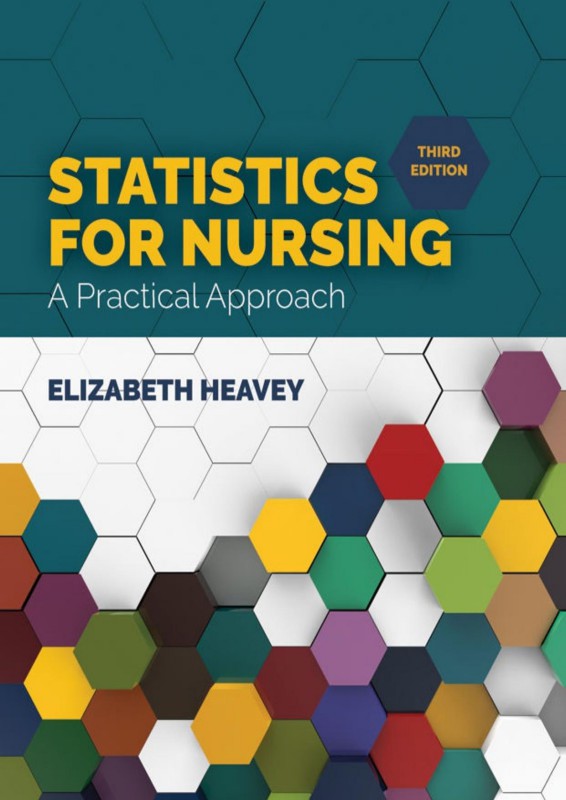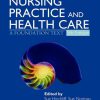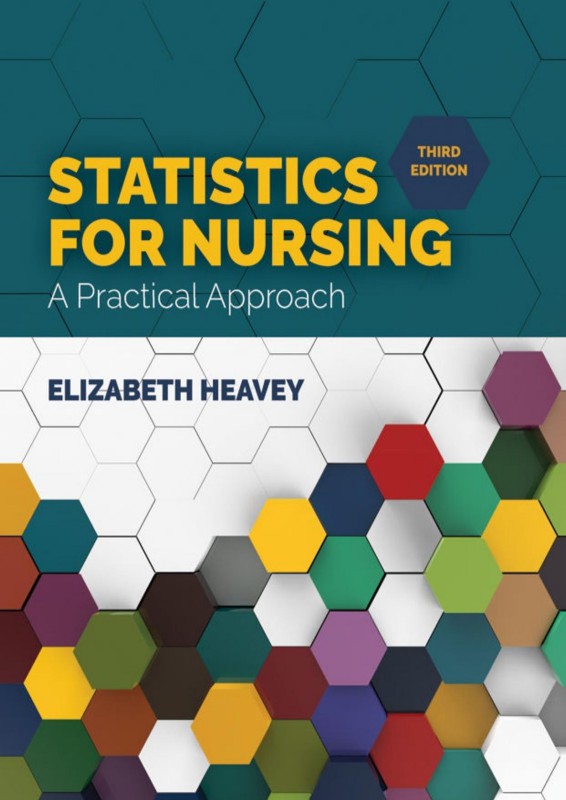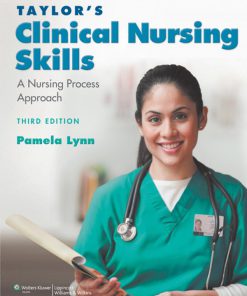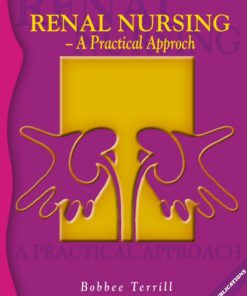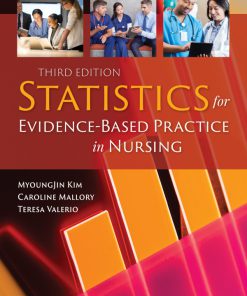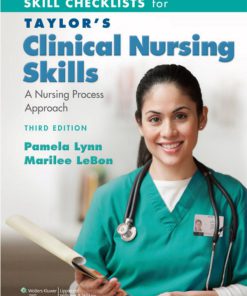Statistics for Nursing A Practical Approach 3rd Edition by Elizabeth Heavey ISBN 1284164594 9781284164596
$50.00 Original price was: $50.00.$25.00Current price is: $25.00.
Authors:Elizabeth Heavey , Series:Nursing [123] , Author sort:Heavey, Elizabeth , Languages:Languages:eng , Published:Published:Feb 2018 , Publisher:Jones & Bartlett Learning
Statistics for Nursing: A Practical Approach 3rd Edition by Elizabeth Heavey – Ebook PDF Instant Download/Delivery. 1284164594, 9781284164596
Full download Statistics for Nursing: A Practical Approach 3rd Edition after payment
Product details:
ISBN 10: 1284164594
ISBN 13: 9781284164596
Author: Elizabeth Heavey
Statistics for Nursing: A Practical Approach 3rd Edition: Each new print copy includes Navigate 2 Advantage Access that unlocks a comprehensive and interactive eBook, student practice activities and assessments, a full suite of instructor resources, and learning analytics reporting tools. Statistics for Nursing: A Practical Approach, Third Edition is designed in accordance with the Conversation Theory of Gordon Pask and presents the complicated topic of statistics in an understandable manner for entry level nurses. The underlying principle of this design is to give students the opportunity to practice statistics while they learn statistics. The text accomplishes this through the inclusion of relevant clinical examples followed by end of chapter application exercises. The Third Edition has been updated with practice activities which enable students to apply the content they have learned. In addition, the authors have included new research articles to develop and reinforce literature critiquing skills. These new features provide more opportunities for students to apply the concepts learned while the explanations are beneficial to clinical experts interested in further developing evidence-based skills. This text meets the needs of both undergraduate nursing research students who need to learn how to critically analyze literature as well as graduate DNP students who must also be familiar with statistics for nursing in accordance with the rigor of the DNP program. New to the Third Edition: • Additional review questions • New and updated graphs and figures • Updated lesson content for computer application exercises
Statistics for Nursing: A Practical Approach 3rd Edition Table of contents:
Chapter 1: Introduction to Statistics and Levels of Measurement
- Introduction
- Population versus Sample
- Quantitative versus Qualitative
- Independent versus Dependent Variables
- Continuous versus Categorical Variables
- Levels of Measurement
- Summary
- Review Questions
Chapter 2: Presenting Data
- Frequency Distributions
- Percentages
- Bar Charts
- Histograms
- Line Graphs
- Scatterplots
- Box and Whiskers Plot
- Summary
- Review Questions
Chapter 3: Descriptive Statistics, Probability, and Measures of Central Tendency
- Descriptive Statistics: Properties of Variables
- Measures of Central Tendency
- Range and Sample Standard Deviation
- Calculating the Standard Deviation
- Using a Box and Whiskers Plot to Display Central Tendency and Range
- Moving Forward: Inferential Statistics
- Frequency Distributions versus Probability Distributions
- The Normal Distribution
- Skewed Distributions
- Summary
- Review Questions
Chapter 4: Measuring Data
- Feasibility
- Validity
- Reliability
- Screening Tests
- Sensitivity
- Specificity
- Positive Predictive Value of a Screen
- Negative Predictive Value
- Efficiency
- Summary
- Review Questions
Chapter 5: Sampling Methods
- Sampling Methods
- Probability Sampling
- Sampling Error versus Sampling Bias
- Sampling Distributions
- Nonprobability Sampling
- Inclusion and Exclusion Criteria
- Sample Size
- Summary
- Review Questions
Chapter 6: Generating the Research Idea
- Hypothesis Testing
- Statistical Significance
- Statistical Significance versus Clinical Significance
- How Does the Test Statistic Compare to the Null Hypothesis?
- Applying the Decision Rule
- Test Statistics and Corresponding p-Values
- Summary
- Review Questions
Chapter 7: Sample Size, Effect Size, and Power
- Effect Size
- Type Two Error
- A Quick Review of Type One and Type Two Errors
- Sample Size
- Summary
- Review Questions
Chapter 8: Chi-Square
- Chi-Square (X²) Test
- The Null and Alternative Hypotheses
- 2 × 2 Table
- Degrees of Freedom
- Statistical Significance
- Direction of the Relationship
- When Not to Use Chi-Square: Assumptions and Special Cases
- Summary
- Review Questions
Chapter 9: Student t-Test
- The Student t-Test
- The Null and Alternative Hypotheses
- Statistical Significance
- Degrees of Freedom for Student t-Tests
- Summary
- Review Questions
Chapter 10: Analysis of Variance (ANOVA)
- Comparing More Than Two Samples
- The Null and Alternative Hypotheses
- Degrees of Freedom
- Statistical Significance
- Appropriate Use of ANOVA
- Repeat-Measures ANOVA
- Summary
- Review Questions
Chapter 11: Correlation Coefficients
- Looking for a Relationship in One Sample
- The Null and Alternative Hypotheses
- Selecting the Best Correlation Test to Use
- Direction of the Relationship
- Sample Size
- Strength of the Relationship
- Statistical Significance
- Appropriate Use of Correlation Coefficients
- More Uses for Pearson’s r
- Summary
- Review Questions
Chapter 12: Regression Analysis
- Quantifying an Association
- Summary
- Review Questions
Chapter 13: Relative Risk, Odds Ratio, and Attributable Risk
- Epidemiology
- Study Designs Used in Epidemiology
- Attributable Risk
- Summary
- Review Questions
People also search for Statistics for Nursing: A Practical Approach 3rd Edition:
practical statistics for nursing and health care
statistics for nursing with access
statistics for nursing a practical approach 3rd edition
statistics for nursing a practical approach by elizabeth heavey
statistics for nursing a practical approach fourth edition

